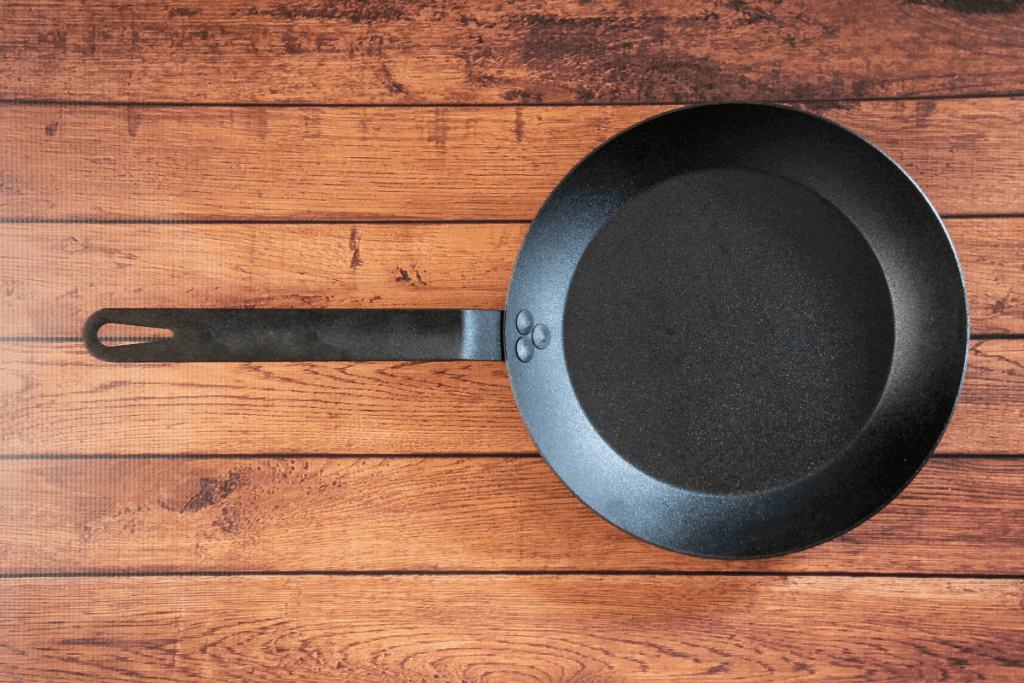Carbon steel pans are one of the most versatile and durable pieces of cookware you’ll find. Almost like a lighter and more nimble version of the trusty cast-iron skillet.
Peek into many restaurant kitchens, and you’ll see carbon steel pans in use for just about everything.
Here’s a list of some of the best uses for a carbon steel pan that play to the strengths of the material. But, as long as you avoid cooking dishes that have a lot of acid in them, you’ll be in pretty good shape.
In This Article
8 Great Uses For A Carbon Steel Pan
Steak
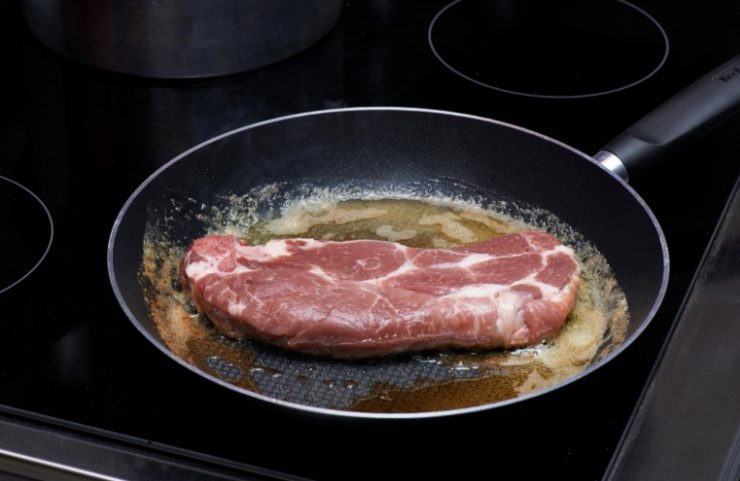
A grill or cast iron pan are often touted as the best options for cooking a steak, but I’d like to throw the carbon steel pan into the ring.
A carbon steel pan can handle as much heat as you can throw at it, so there’s no problem getting a nice hard sear. Then, they easily transition to the oven in order to get a steak to your desired doneness.
Sure, a cast iron pan can do all of that too. But, carbon steel pans are often much thinner than cast iron and that gives them a faster recovery time.
As soon as you drop your steak in a pan it’s going to quickly lower its temperature. And the thinner carbon steel will recover and be back up to temp while the cast iron continues to recover and reheat.
Chicken
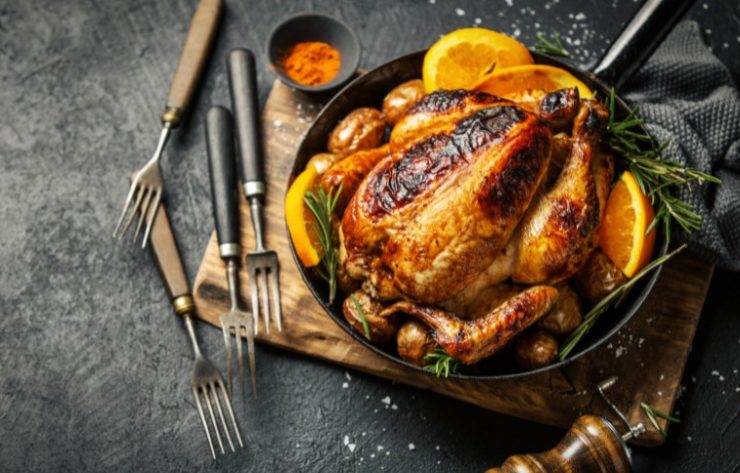
For similar reasons as cooking a steak, carbon steel is a great option when cooking whole pieces of chicken. Especially when you’re dealing with skin-on breasts or thighs and you want the skin to get nice and crispy.
Try this: Preheat your carbon steel pan over medium-high heat and add a light drizzle of high heat oil. You won’t need much since you’ll be rendering out most of the fat in the chicken skin. Place your chicken, skin side down in your hot pan.
After a couple of minutes, the skin should start developing some nice brown color. Now, simply place the whole pan in a hot oven until the chicken is just cooked through. No need to flip or fuss.
The skin will render and crisp through the entire cooking process, leaving you with crispy skin that’s not fatty or rubbery. This technique works equally as well with a nice piece of skin on fish.
Stir Fry
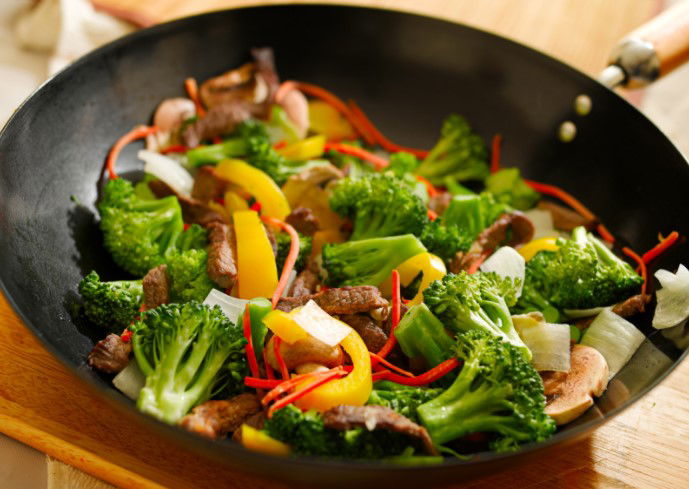
Look into almost any Chinese restaurant and you’re bound to find most of the dishes being cooked in carbon steel woks. And while the shape isn’t the same, a carbon steel pan has all of the other prerequisites to be a great stir fry pan.
High heat tolerance, check. Sloped sides for tossing ingredients, check. A smooth surface with natural nonstick properties, check. So, crank up the heat for deliciously blistered veggies and charred meat.
Bacon
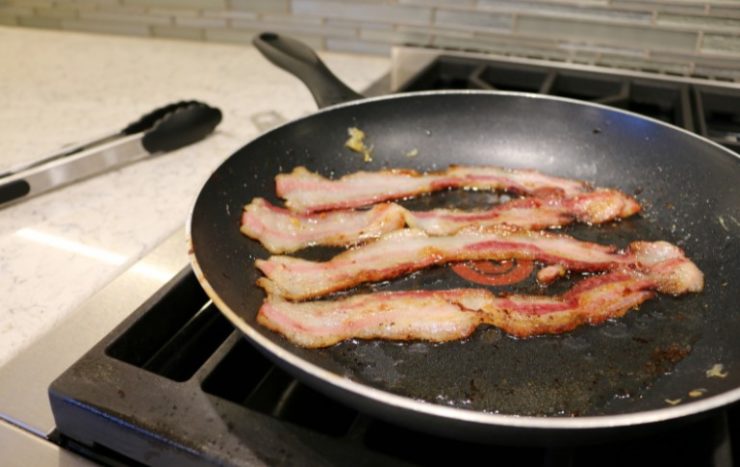
Carbon steel pans rely on a seasoning layer to protect them from rust and to develop their non-stick cooking properties. And that seasoning layer is nothing more than fat that has been cooked onto the surface of the pan.
So, not only is a carbon steel pan great for cooking bacon, but cooking bacon is great for your carbon steel pan. The fat from the bacon will help reinforce your pan’s seasoning. So, cooking and eating bacon is basically a necessary kitchen chore.
Fried Eggs
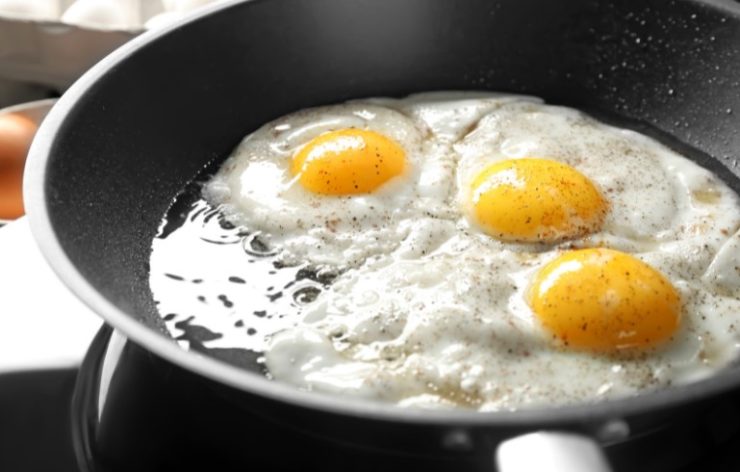
I know it may seem like it, but I promise that I’m not trying to steal the thunder from the venerable cast-iron skillet. First steak, then bacon, and now eggs!?
Cast iron is still a favorite in my kitchen. But, the perfectly smooth surface of a carbon steel pan is just plain better when it comes to frying eggs (there I said it). Especially if you like yours with that crispy, brown fringe.
And while the term “non-stick” gets thrown around a lot in regards to carbon steel, you definitely still need to use oil to keep most ingredients (definitely eggs) from sticking.
Roasted Vegetables
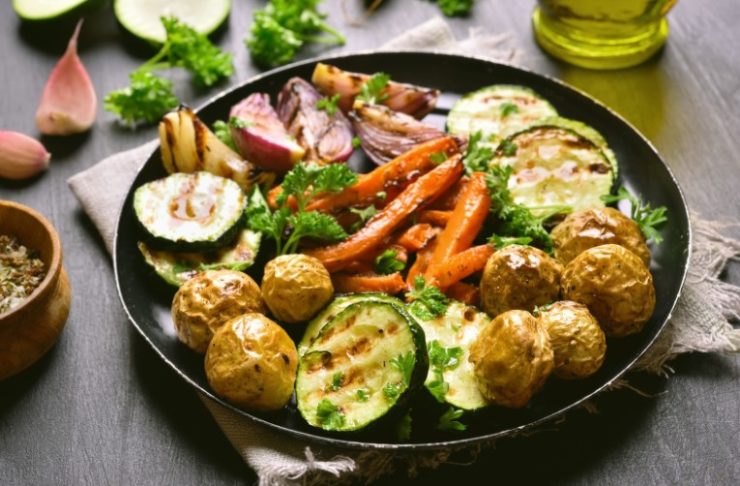
Carbon steel is a great option when it comes to pan roasting vegetables. Diced winter squash, cauliflower, brussels sprouts, and carrots are just a few excellent candidates.
You can start your veg on the stovetop to get a head start on caramelization, then toss the whole pan in the oven to finish the job.
The relatively light weight of carbon steel makes it easy to toss ingredients in the pan. Definitely much easier and more effective than trying to stir or toss vegetables that are on a flat sheet tray in the oven. And that makes for more even cooking and better distribution of seasonings.
Grilled Cheese

I say grilled cheese, but you can really throw in any type of hot griddled sandwich here. Ok, maybe we’ll keep cheese as a requirement.
Carbon steel is excellent when it comes to browning, whether from caramelization or the Maillard reaction. And the fairly thick bottom and walls of most carbon steel pans offer a little extra assurance of browning your bread instead of burning it.
Anything Shallow Fried
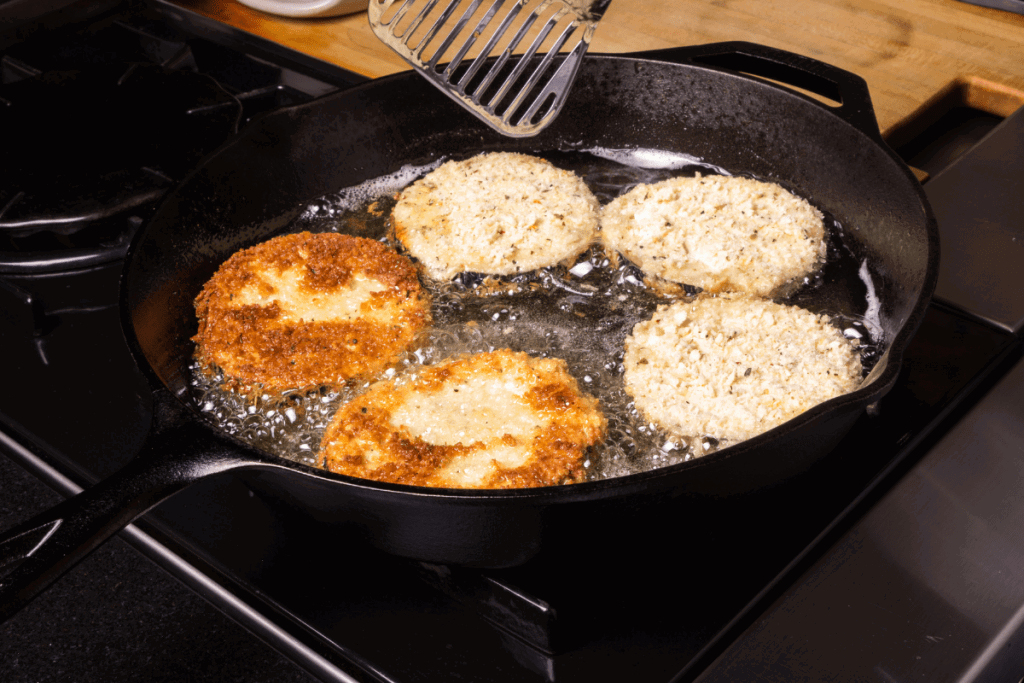
Ok, just so you don’t think I’ve completely lost it, I still think that a cast iron skillet is the king of the shallow fry. But, if you don’t have one on hand, carbon steel is the next best thing.
First, they can handle high temperatures for long periods of time. And, the flared or sloped sidewalls make it easy to access ingredients if they need to be flipped. Plus, this is another use that will work to preserve and even enhance your pan’s seasoning and non-stick properties.
For this, just be sure to choose a pan with high sidewalls, and don’t add oil more than halfway up to the top.
Final Thoughts
As you can see, a carbon steel pan is no one-trick pony. I would consider it one of the most versatile and durable options in the kitchen.
The only downside to carbon steel is that it requires some maintenance and special cleaning. Most of which revolves around maintaining the pan’s seasoning in order to keep it from rusting.
Because of that, you may have noticed that none of my recommended uses involve much liquid or any acid. Both things can damage a pan’s seasoning.
While neither will ruin a pan, avoiding them and employing dry cooking techniques that involve oil or an ingredient’s natural fat will make maintenance and cleaning easier and more successful.
Frequently Asked Questions
What Should You Cook In A Carbon Steel Pan?
Carbon steel pans are very versatile. They are great for high heat uses like searing meat and seafood, as well as going from the stovetop to the oven. Cooking items that contain a higher fat content are also good to maintain the pan’s seasoning.
What Should You Not Cook In A Carbon Steel Pan?
Avoid cooking dishes that contain a high level of acid. Things like vinegar, tomatoes, and citrus all have a lot of acid and can end up damaging the seasoning of a carbon steel pan.
Why Is Food Sticking To My Carbon Steel Pan?
There are three common reasons that food is sticking to your carbon steel pan. The pan needs to be seasoned, the pan isn’t hot enough when you add ingredients, or there is not enough oil or fat in the pan when you add your ingredients.
